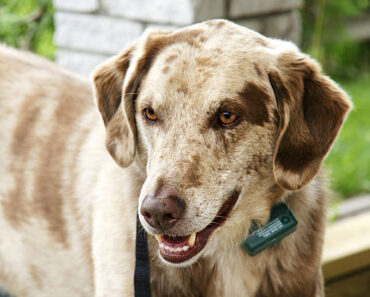
The return of good weather inevitably signs the return of parasites. Especially ticks, which carry very serious diseases. Our five tips to avoid the worst.
1. VACCINATION
The choice of vaccination depends on your pet’s lifestyle and the places it frequents. The vaccine against piroplasmosis is essential if you stay in Ariège, Gers and Jura, three regions where ticks infested by Babesia canis are the most numerous. A booster is recommended every year. Another vaccine protects against borreliosis (or Lyme disease), which mainly affects hunting dogs. The culprit bacterium is very well established throughout France, particularly in the forests of the North and East. This vaccine requires an annual booster. In recently infected dogs, the vaccine is of interest to help their organism to better defend itself against the bacterium.
2 .THE REPELLENT
The choice of repellents depends on the age, species and physiological condition of the animal. Therefore, it is best to ask your veterinarian for advice. Some repellents are made of chemical molecules and others are based on geraniol (a plant extract). If you have a garden, mow regularly because ticks perch especially on tall grass, where they await potential prey. You can also plant chrysanthemums that ticks hate!
3. BRUSHING
Despite its size – between 2 and 10 millimeters – a tick can go unnoticed in the middle of the hair. Therefore, each time you return from a walk, a proper inspection is required. Also remember to look where the skin is thinnest: on the head, neck and between each finger, because ticks like these areas.
4 .THE TICK REMOVER
Removing a tick requires a certain amount of know-how. Because if you pull on the visible part of the tick, the body will detach from its head, but the rostrum (mouth part of the tick) will remain stuck in the skin. In the same way, do not try to numb the tick with ether. It will have time to release its salivary juices containing parasites and bacteria. It is best to use a special tick hook.
5. MONITORING
If the removed tick has had a blood meal, the animal must be monitored in the days and weeks that follow. If it is the piroplasmosis bacterium, the red blood cells will be affected first, followed by the kidneys and liver. This results in a high fever with deterioration of the general condition, very pale gums and conjunctivae, dark urine and/or lameness. The veterinarian must urgently start the anti-parasite treatment, because time is running out. If the tick has transmitted the bacteria responsible for ehrlichiosis, symptoms appear only ten to twenty days after contamination. The affected dog is very depressed, feverish, anorexic, and has a nose discharge. Antibiotics can help the dog to recover if it is treated quickly. Finally, in case of borreliosis, it is a sudden and very painful lameness that gives the alarm. As this disease occurs in fits, some owners neglect to consult. However, the disease has not disappeared. It will evolve and appear in a chronic form with cardiac, renal and neurological damage. Antibiotic treatments are indispensable but are not always sufficient. Only anti-inflammatory drugs relieve the pain.






